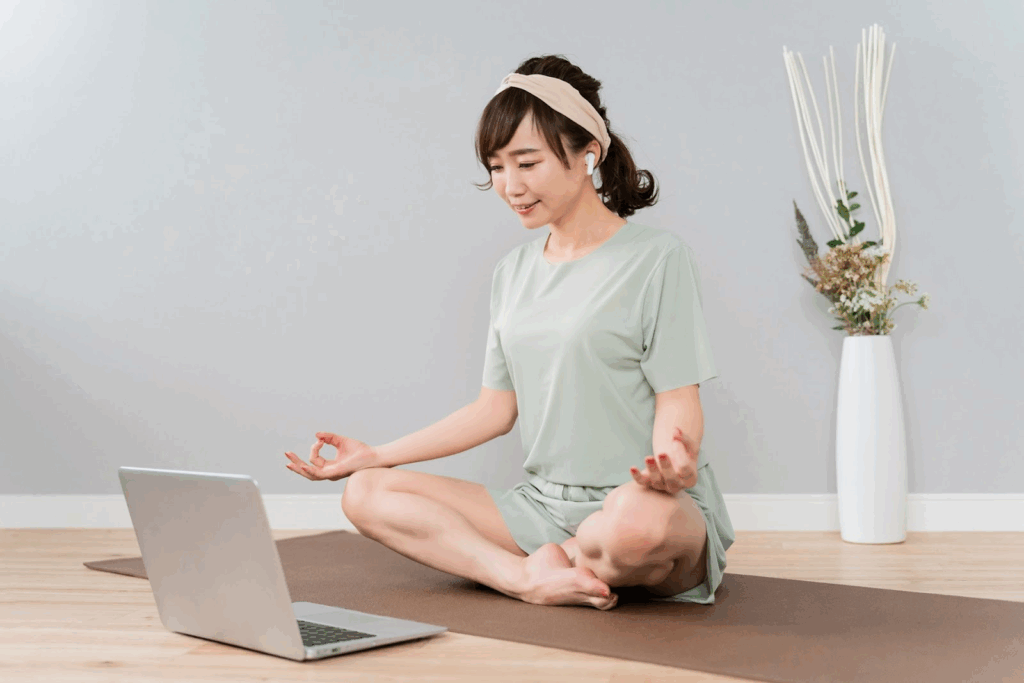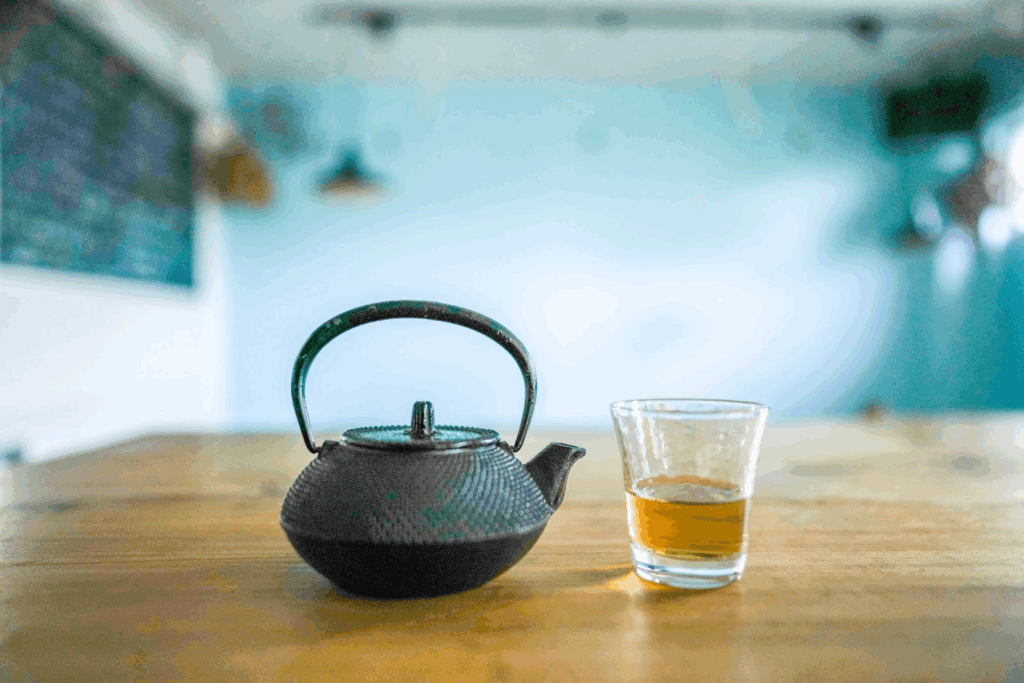A Tiny Meditation: Mindfulness Without Time or Place

In my previous blog, I shared how incorporating morning and evening mindfulness meditation into daily life gradually nurtured a sense of spaciousness in my heart. At the end of that entry, I mentioned:
“Next time, I’d like to write about small acts of daily mindfulness you can practice in between chores and work.”
But before diving into that, a simple question surfaced in my mind:
“Mindfulness—what is it, really?”
I’d seen the term “mindfulness” in books and apps. I thought I understood it. But when I asked myself whether what I was doing truly qualified as mindfulness, I realized I wasn’t entirely sure. That’s why, before discussing how to bring mindfulness meditation into daily life, I’d like to pause and explore that question first. Then, in the second half, I’ll share my personal experience with what I call “tiny meditation”—a form of simple meditation that reconnects me with stillness, right here, right now, without needing any special time or place. In a way, it’s my answer to “meditation near me”: meditation that lives in the everyday.
Mindfulness Meditation—What It Really Means in Daily Life
In books and apps, mindfulness meditation is often explained in simple terms:
“Paying attention to the present moment, non-judgmentally and with acceptance.”
When I first came across this definition, I understood it with my mind, yet it still felt a little out of reach. Over time, as I practiced mindful breathing in the mornings and evenings, something began to shift. I realized that noticing itself doesn’t demand special training or a spiritual background. It’s an ability anyone can practice, anytime, in any place. Gently pausing to observe these small moments—this, I’ve come to feel, is the heart of daily mindfulness. And within such everyday practice, the benefits of mindfulness meditation begin to appear: steadier focus, calmer responses to stress, and a kinder way of speaking to myself.
Everyday Mindfulness Practices You Can Try Anywhere

- While Washing Dishes
The warmth of the water, the shimmer of soap bubbles, the textures.
When you wash dishes with awareness, not on autopilot, a quiet stillness emerges—a form of simple meditation hidden in daily life.
- In Between Computer Tasks
After sending an email and before diving into your next task—just close your eyes for one minute and practice mindful breathing.
I often open the Gassho app and simply listen to the sound of a bell. That brief pause resets my mind and becomes a moment of daily mindfulness. Many beginners report that a one-minute mindful breathing practice between tasks lowers overwhelm and builds a gentler daily mindfulness habit. - During a Walk
The feel of your feet touching the ground. The sound of leaves rustling.
When walking becomes not just “getting somewhere,” but a sensory practice of mindfulness meditation, you’ll meet a whole new kind of peace.
How to Practice Mindfulness Meditation Anytime in Daily Life

Before diving into the best times and cues for practice, here’s a simple way to begin mindfulness meditation:
- Sit comfortably and close your eyes.
- Bring your attention to your breath—inhaling and exhaling naturally.
- When thoughts arise, notice them gently and return to your breath.
- Continue for one to three minutes to start.
This simple practice forms the foundation. From here, you can weave mindfulness into different parts of your daily life.
– The Right Time Is “Whenever You Notice”
You don’t need to practice mindfulness meditation at the same time or place every day.The best moment is when you notice yourself becoming rushed or distracted—that’s the cue.
– Have Your Own “Switch”
For me, that switch is the Gassho app. The soothing sounds guide me back to mindful breathing and awareness. Even making tea becomes simple meditation if I listen to a 1-minute audio while noticing the steam and scent.
– Don’t Try to “Do It Right”
At first, I worried: “Am I doing it properly?” Now, I accept that sometimes I can feel the moment—and sometimes I can’t. What matters is simply remembering: “I am here, right now.” That’s the essence of daily mindfulness.
Conclusion: Mindfulness and Mindfulness Meditation Live in Fleeting Moments

Mindfulness meditation doesn’t require sacred rituals or expensive tools. You don’t need a quiet mountain retreat. All it takes is noticing this moment, and gently pausing to honor it. That’s enough to turn your kitchen, your desk, even a train station platform into a sacred space for simple meditation. Because it needs no time or place, mindfulness becomes part of your daily rhythm. The true benefits of mindfulness meditation appear not only in calm moments but also across daily mindfulness practices—work breaks, mindful breathing, and simple meditation at home—helping us manage stress, regain focus, and cultivate self-compassion. And as I continue nurturing that awareness through mindful breathing and daily mindfulness practices, another theme is beginning to emerge: Compassion for myself. When I make a mistake. When I feel down. When my heart feels uneasy. At times like that, I’m learning that being mindful—and more importantly, being kind to myself—is what I need most.
In my next blog, I’ll share more about how I discovered this “mindful self-compassion.”
Yuka, Team Gassho
Frequently Asked Questions
FAQ 1: What is mindfulness in simple terms?
Answer: Mindfulness is paying attention to the present moment with acceptance, without judgment. It is the practice of being aware of thoughts, feelings, and surroundings.
Real Results: Real Results: Both the World Health Organization (WHO) and Harvard Health Publishing describe mindfulness as “a way of being aware of and accepting the present moment,” and note that it is widely applied in healthcare and educational settings.
Takeaway: Mindfulness is simply noticing the present moment.
FAQ 2: How can I practice mindfulness meditation at home?
Answer: You can practice mindfulness by sitting quietly, focusing on your breath, and observing thoughts without reacting. Even one minute of mindful breathing helps. Set a one-minute timer or use the Gassho app’s bell to start your mindfulness practice today.
Real Results: Research from Harvard shows that short daily mindfulness practices reduce stress hormone levels and improve sleep quality.
Takeaway: Even a minute of mindful breathing makes a difference.
FAQ 3: Do I need an app to start mindfulness meditation?
Answer: While you don’t need an app, tools like the Gassho app can provide guided mindfulness practices and gentle reminders to pause. For beginners, a 7-day micro-practice plan (1–3 minutes daily) within the Gassho app keeps your mindfulness practice consistent.
Real Results: Many users report that using mindfulness apps increased consistency and made it easier to build a daily habit.
Takeaway: Support tools help mindfulness become a lifestyle.
FAQ 4: How does mindfulness help with stress?
Answer: Mindfulness reduces stress by calming the nervous system, lowering cortisol levels, and improving emotional regulation.
Real Results: A Stanford study found that participants practicing mindfulness meditation reduced stress levels by nearly 40% within eight weeks.
Takeaway: Mindfulness brings calm to daily stress.
FAQ 5: Can mindfulness improve sleep quality?
Answer: Yes, mindfulness meditation before bed helps quiet the mind, reduces overthinking, and promotes deeper sleep.
Real Results: A UCLA study showed that older adults with sleep problems improved sleep quality after six weeks of mindfulness practice.
Takeaway: Mindful evenings invite restful nights.
FAQ 6: What is the difference between mindfulness and meditation?
Answer: Mindfulness is the state of awareness in the present, while meditation is a structured practice to cultivate mindfulness.
Real Results: Many practitioners report that daily meditation builds lasting mindfulness, making it easier to stay present throughout the day.
Takeaway: Meditation trains the muscle of mindfulness.
FAQ 7: How long should a mindfulness session last?
Answer: Even one to five minutes of mindfulness meditation can be effective. Longer sessions deepen awareness but are not required for benefits.
Real Results: Beginners practicing only 5 minutes a day reported significant reductions in tension within two weeks, and 65% said they felt calmer in daily life after one month.
Takeaway: Small moments are enough to start.
FAQ 8: Can mindfulness help with anxiety?
Answer: Mindfulness teaches you to observe anxious thoughts without being consumed by them, reducing the intensity of worry.
Real Results: Clinical trials show that mindfulness-based interventions reduce anxiety symptoms in over 50% of participants.
Takeaway: Mindfulness creates space between you and anxiety.
FAQ 9: Is mindfulness useful during daily activities?
Answer: Absolutely. You can bring mindfulness into activities like washing dishes, walking, or drinking tea by noticing sensations and slowing down.
Real Results: Many users find that mindful pauses during chores reduce feelings of overwhelm and increase daily satisfaction.
Takeaway: Every moment can become mindful.
FAQ 10: Does mindfulness require silence or a special place?
Answer: No, mindfulness can be practiced anywhere—at your desk, on a train, or while cooking. What matters is awareness, not location.
Real Results: Research shows that micro-meditations practiced during work breaks improve focus and reduce fatigue.
Takeaway: Mindfulness fits into any moment, any place.
FAQ 11: Can mindfulness increase compassion for myself and others?
Answer: Yes, mindfulness naturally strengthens self-compassion and empathy by helping you notice emotions without judgment.
Real Results: Studies on mindfulness and compassion meditation reveal increased emotional resilience and improved relationships.
Takeaway: Awareness opens the door to kindness.
Related Articles
Explains how just a few minutes of daily meditation can reduce stress and depressive symptoms while improving sleep quality.
Covers research showing that an eight-week mindfulness program helped maintain and even improve sustained attention.
A clinical study examining how MBSR (Mindfulness-Based Stress Reduction) interventions lead to clinical improvements in anxiety and depression.
A Gassho official blog post introducing simple mindfulness practices that can be integrated into everyday life.
An article exploring the connection between mindfulness practices and overall well-being.
